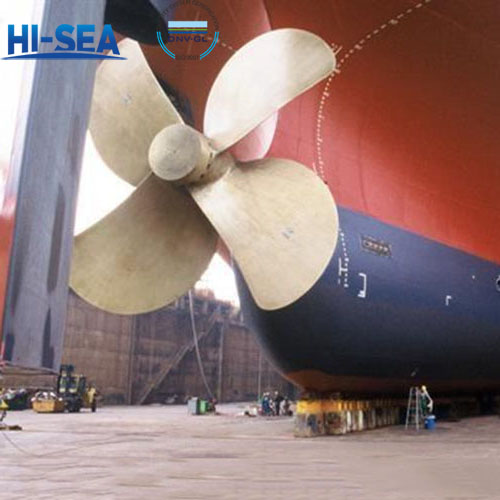
Maintenance of Marine Propellers
The maintenance of marine propellers is an important part of ensuring the safety and efficient operation of ships. Regular maintenance can prevent potential problems, extend the service life of propellers, and improve the operational efficiency of ships. Through regular and comprehensive maintenance, it is possible to ensure that marine propellers are always in good working condition, reduce failure rates, and improve the safety and operational efficiency of ships. It mainly includes the following three aspects:
Abnormal phenomena of propellers during navigation
Maintenance of Cracks and Fractures in Marine Propeller Blades
Maintenance of blade bending deformation
Overview
1. Abnormal phenomena of propellers during navigation
Due to poor material quality and casting defects of the propeller, the blades are severely corroded by seawater, cavitation, and fouling by marine organisms, or come into contact with rocks, cables, etc., resulting in blade erosion, deformation, and even loss, leading to uneven quality of the propeller blades and loss of balance. If the propeller loses balance, it will cause knocking at the stern bearing, abnormal vibration of the shaft system and hull, and even instability of the main engine speed. For example, a certain ship is sailing on the sea when the sea surface is calm and the main engine is running normally at a speed of 100 r/min. Suddenly, the ship's hull experienced severe vibration, and the on duty engineer immediately took measures to slow down the navigation. When the host runs at a speed of 70r/min, most of the vibration and knocking sounds disappear. Based on this, it is preliminarily judged that there is a problem with the propeller. Upon inspection, it was found that one of the four blades of the propeller had broken from the root, causing severe imbalance in the propeller. When the ship enters the dock, attention should be paid to checking the propeller blades and conducting static balance tests if necessary.
2. Maintenance of Cracks and Fractures in Marine Propeller Blades
Due to corrosion and impact from seawater, or collision with hard objects, the propeller blades may crack, and even cause partial or complete blade breakage.
For blade cracks, under the condition of ensuring welding quality, welding rods with the same composition as the base material can be used for the following crack repairs:
(1) Greater than 0 Cracks on 7R blades or on blades between (0.4~0.7) R, but with a length not exceeding 1/4 of the blade width at that location, generally referring to propellers with a diameter D>2 m:
(2) Short cracks at the root of propeller blades with a diameter of D ≤ 2 m, with a length not exceeding 1/8 of the blade width; and short cracks on propellers with a diameter ≤ 1.2 m, with a length not exceeding the blade thickness.
For blade cracks, coal repair is generally used. You should first add T treatment to the tread, and in special cases, drilling a stopper hole is allowed as a temporary repair measure.
The propeller with serious cracks causing blade breakage should be replaced. The length of the broken copper and steel propeller blades shall not exceed one-third of the blade length (up to a maximum of 400mm). When the maximum thickness does not exceed 50mm, welding or joint repair methods can be used for repair. At the fracture point outside the 0.7R of the blade shown in Figure 1-77, it shall be cut off and a joint made of the same material shall be welded to restore its use.
When the material properties of the propeller have changed due to long-term use or multiple welding repairs (such as embrittlement or cracking), and it is difficult to ensure quality after repair, a new propeller should be considered for replacement.
3. Maintenance of blade bending deformation
Copper propellers may deform their blades due to long-term use or collisions. Mild cases cause the pitch of the blade to change, while severe cases cause the blade to bend or curl beyond 2/3R. Blade deformation can cause problems such as ship vibration and increased bearing wear. The blade edge has a small curvature (within 20mm). The deformation at the bend with a thin thickness (15-20mm) can be corrected in a cold state; If it exceeds the above range, thermal correction should be used.
For more marine propeller information, kindly please click here.





